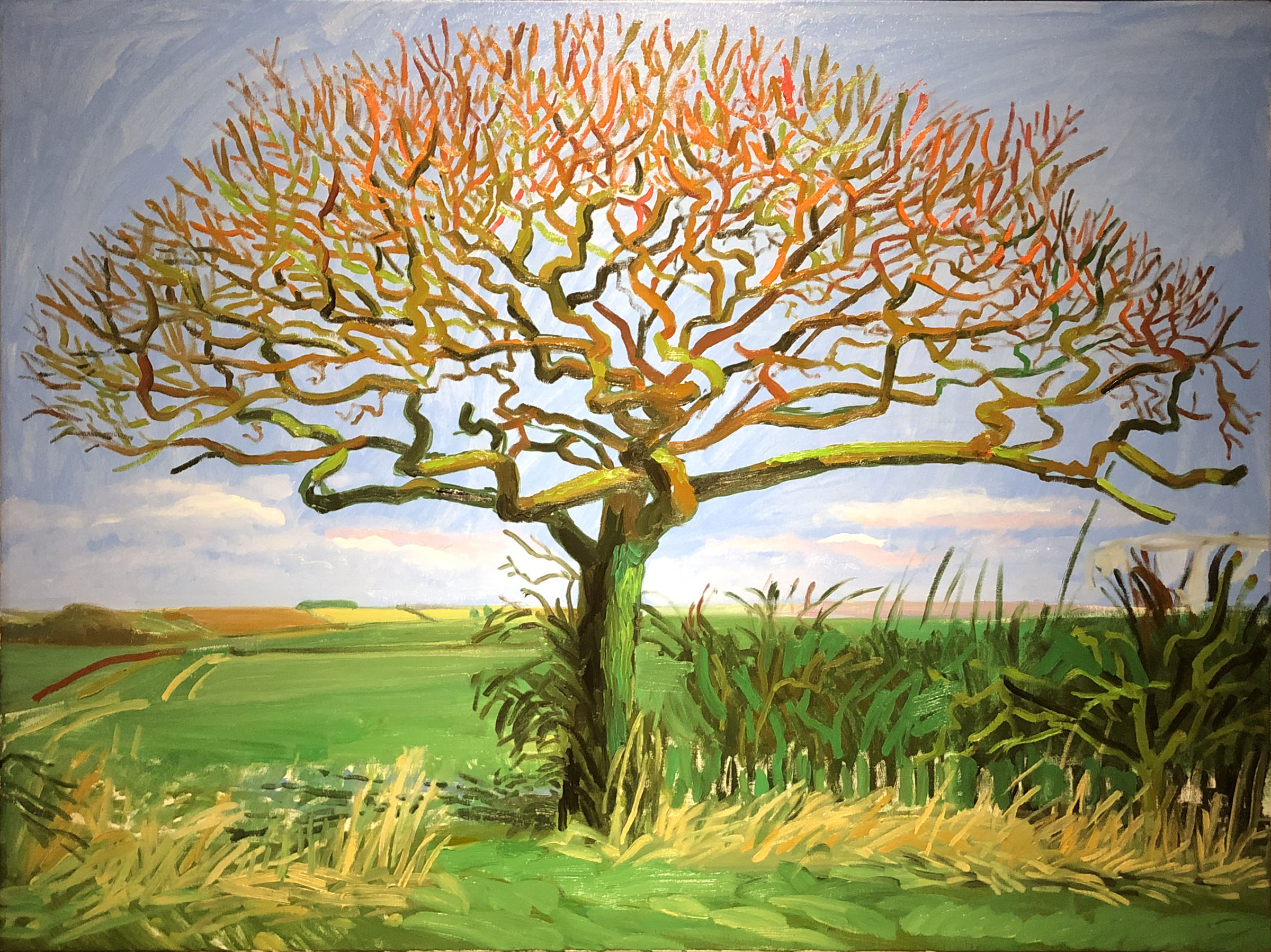A Hockney For the Huntington
 |
| David Hockney, Tree on Woldgate, 6 March, 2006. The Huntington Library, Art Museum, and Botanical Gardens. Gift of Gregory Evans in memory of Dagny Janss Corcoran |
In 2019 Hockney left Los Angeles after 55 years, explaining that he wanted to be able to smoke and eat in a restaurant at the same time. Works such as Tree in Woldgate revisit the Yorkshire countryside of the artist's youth. The Huntington picture finds Fauve colorism in the branches of a bare tree against a springtime sky.
Hockney is above all known for his 1960s paintings of L.A. swimming pools and friends. None of these signature paintings have landed in a local museum. L.A. has two prime Hockney works of the 1980s, both California landscapes: the painting Mulholland Drive: The Road to the Studio (1980, LACMA) and the photo collage Pearblossom Hwy., 11-18th April 1986, #2 (Getty). Tree on Woldgate is the first late British picture in a local institution. It extends the chronological range of the Huntington's British painting collection, which has only recently ventured into modernism.
Hockney sees his Yorkshire landscapes in relation to Constable's lifelong documentation of Suffolk. The Huntington takes him at his word, displaying (four-footer) Tree on Woldgate in the same room as Constable's "six-footer" View on the Stour.
"Most people think all trees look alike," Hockney wrote in 2009. "I see them as all different (like people), especially in the winter when you see the branches pointing up searching for light. The first signs of spring are the tiny new branches at the tops that one hardly notices until they have buds.… All living things die. Why, death awaits even if you do not smoke."
 |
| Installation view with John Constable's View on the Stour Near Dedham, 1822 |
Comments
I've never figured out why Eli Broad in particular avoided purchasing a Hockney or showed a lack of interest in that artist's various works associated with "LA."
As phallic symbols in art go, Hockney distinguished himself with the "splash" motif.
In art history, the tree is a more banal phallic symbol. It's even the precursor to Mondrian's grid paintings.
--- J. Garcin.